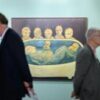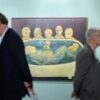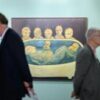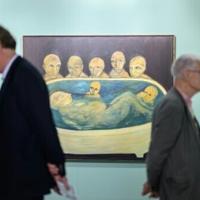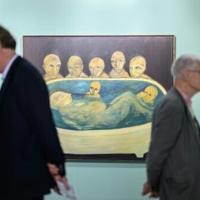The View From is a part of The Asia Pivot, Artnet Pro’s biweekly members-only newsletter providing mission-critical analysis, insights, and exclusive intelligence on developments in Asia’s art markets, with a focus on business opportunities and challenges. Subscribe here to receive it directly to your inbox.
This year, we celebrate the 10th anniversary of Phillips in Asia. When I look back to a decade ago, setting up our first office in Hong Kong, it still feels surreal. We were just a small, tight-knit team, a handful of us working out of a modest space with a lot of ambition. Now, a decade on, we’ve grown into a major presence in the region. We have dedicated specialists, a robust client network across the region, and a calendar full of high-profile sales at our headquarters—30,000 square feet of exhibition space as well as our own cafe, auction room, plus offices—in the West Kowloon Cultural District.
Watching this transformation unfold from the inside has been one of the most fulfilling experiences of my career.
When I reflect on my own journey through the art trade, it’s tempting to describe it as time travel. In a way, my career has mirrored the evolution of the Asian art market itself.
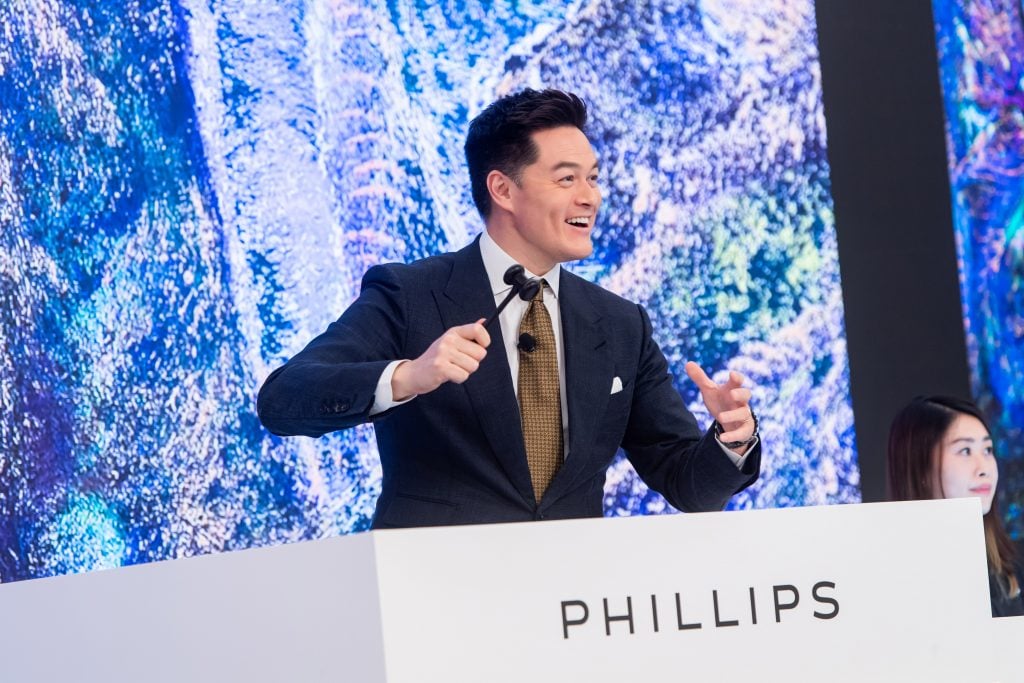
Jonathan Crockett in action. Courtesy of Phillips.
When I studied Chinese in Beijing during my gap year in 1997, I recognized the potential of China’s economy and its growth in the next decades. I also studied art history at university. So, when an opportunity at Christie’s London came up, I applied for the job, and that was how I started there in 2003. A year later, I moved to Sotheby’s Chinese art department in London. I traveled to Hong Kong often to help to catalog the sales of Chinese art there.
An opportunity to join the contemporary Chinese art department in Hong Kong presented itself in 2007—a time when this segment was booming. It was moving at a rapid pace, with prices and interest from collectors from around the world escalating. The department also quickly expanded to include contemporary art from Korea, Japan, and Southeast Asia. During my five years of running my own art advisory business after I left Sotheby’s in 2009, I also started selling postwar and Modern art.
I joined Phillips 10 years ago to help to launch its Asian operations. Sotheby’s and Christie’s had been in Asia for decades, but few here knew who Phillips was. We had no clients in Asia except those brought to the table by a handful of specialists and me. People confused us with the Dutch electronics company with a similar name. I even received an email asking us how to fix a broken TV! Around 80 percent of the clients participating in our initial sales in Hong Kong came from outside of Asia.
Soon we overcame the brand-recognition issue as we continued to cultivate our relationships and engage with a wider community in the region. Now, more than 80 percent of our current collectors come from Asia.
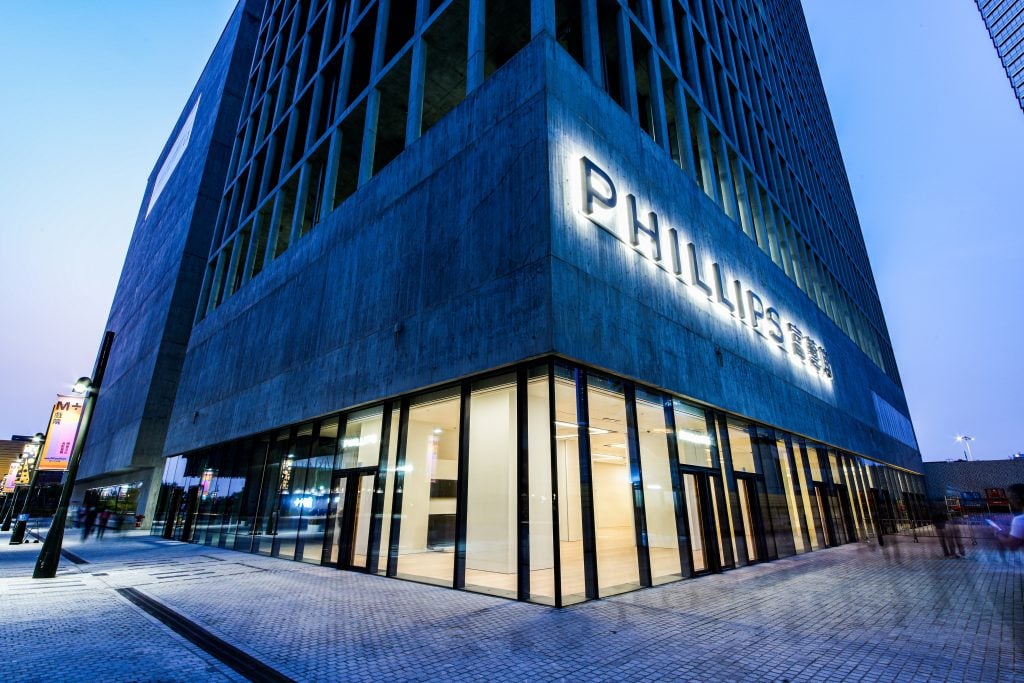
Phillips Asia headquarters in the West Kowloon Cultural District of Hong Kong. Courtesy of Phillips.
Having said that, the demographic of Asian collectors also changed dramatically over the last 10 years. We had the most seasoned collectors buying and selling with us at the beginning. We then began to see many young collectors buying from us—our brand as an auction house seems to resonate with a younger audience. Among the youngest are in their 20s, though the core group of young collectors are in their 30s and 40s. These young collectors have brought to us their parents, many of whom are collectors but who had not heard of us before.
The buying habits of these young collectors who are just beginning their art-collecting journey pose a stark contrast to their counterparts in the West. They are confident, participating at the highest level of our evening sales and comfortably spending millions of dollars with their first transactions, sometimes more than $10 million. We did not know who they were initially, and only found out later that a lot of them were either from second-generation wealth or entrepreneurs who have built successful businesses. They have been schooled abroad or are in tune with contemporary popular culture. The rising market—something that changed only recently—appealed to them.
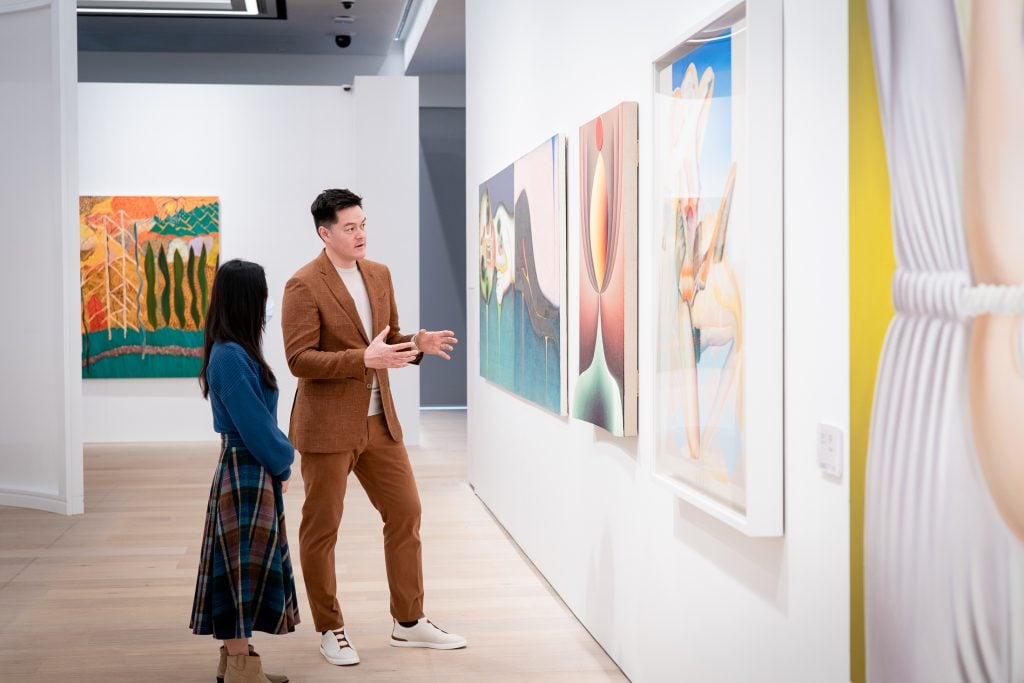
Jonathan Crockett discusses art with an exhibition goer. Courtesy of Phillips.
For more than a decade, the market was heading just one direction. That snowballing effect also drew investors who treat art as a speculative asset class of its own. The recent market correction has, in many ways, hurt us more than it has others—as a house, we have developed a niche in the field of ultra-contemporary. The speculative fervor is gone. Now, we have reverted to the traditional reasoning in the art trade, and despite prices coming down, we find ourselves in what can be described as a healthy market, with people selling out of need, and buying for appreciation’s sake.
While interest from mainland China has cooled off in the last couple of years, it has spread across other regions in Asia. Hong Kong and Taiwan remain extremely important to us, in addition to Korea, Japan, Singapore, Indonesia, and increasingly so, Thailand and Vietnam. In a market of uncertainties, people are looking to buy works by proven names and works of the best quality and condition.
The market will pick up again, and those that have bought in the current market will most likely see a rise in value in their purchases.
Something we need to pay attention to is how AI will bring change. I predict that in the next three to five years, AI will transform our entire business and marketplace, from research and education to predicting future trends. Any company that does not adapt accordingly will find itself out of business very soon.
When it comes to art collecting and appreciation, however, you can never take the human element away. You need to physically stand in front of an artwork to truly appreciate it. AI will never replace that.
—As told to Vivienne Chow
Jonathan Crockett, a veteran auctioneer, is Phillips’s chairman for Asia. He joined the house in Hong Kong in 2016 to help to spearhead its expansions in Asia. He previously worked at Christie’s and Sotheby’s and ran his own art advisory.
This post was originally published on this site be sure to check out more of their content

